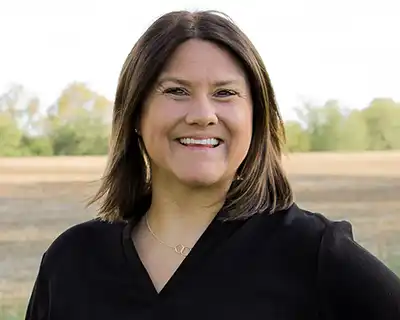As adoption of biologicals increases, so does the need for science-based decisions and trusted advisors. Certis Biologicals, the legacy innovator in the space, brings expertise and a commitment to sustainability that helps them cut through the noise.
For more than 60 years, Certis Biologicals has been investing in research to shore up the reputation of a segment that was once sullied by bad actors. The company fermented the first Bt products registered in the U.S. and now, they manufacture and distribute biofungicides, bioinsecticides, bionematicides and bioherbicides to more than 55 countries and hold more than 300 product registrations.
Shaun Berry, Vice-President, Research & Development for Certis Biologicals, attributes the growth in their company, and in biologicals overall, largely to one factor.
“Because biologicals are derived from nature, they are a critical entry point for those all along the value chain who are interested in agriculture and food production as a more sustainable, regenerative and climate-smart practice,” Berry says. “It is a driving factor for adoption for many and is a large part of the increasing demand for biologicals.”
Throughout the shifts, Berry says the company is leaning upon their expertise and commitment to sustainability to drive support around their current portfolio and innovation to provide additional tools for growers.
America’s Conservation Ag Movement talked with Berry about their research and development pipeline, what he sees for the future of the industry and how growers that span the entire spectrum are using bio-based tools as a way to embrace sustainability and climate-smart agriculture.

Certis Biologicals
What qualities do biologicals offer for growers who are concerned about soil health, environmental stewardship and water quality?
Biologicals are naturally derived. They are what nature has already developed to help maintain a balance between vegetation, pests and disease and their natural enemies and predators. Using biologicals helps restore that balance. While the effect of biologicals may be short-lived and require multiple applications, we are attempting to restore the balance during the key growth stages of the crop. It’s a balancing act between good vs. bad—pathogen vs. control agent. Using our products is just tipping the balance in favor of the crop.
Thus, biologicals are really a feel-good story where we are bringing back what nature originally designed to maintain balance. Applying biologicals in many cases helps restore soil health which has been degraded over time with continuous monoculture, helps restore the environmental balance and helps reduce potential run-off of chemistries into the groundwater and later into rivers and catchment areas. Biologicals tend to be very specific to the pathogen that they are designed to control, have short lived activity, reduce to non-detectable background levels after application and have little/no effect on non-target organisms.
Our products tick all the boxes for the grower in terms of soil health, environmental stewardship and water quality.
How is Certis Biologicals’ research and development helping to provide new tools for growers to protect their crops?
Despite our pedigreed history in manufacturing and distributing bio-based products, Certis Biologicals has traditionally been very focused on development with less emphasis on research. Lately, we have put more emphasis on research, doubling our lab footprint, increasing the size of our research team, expanding our expertise and access to technology – all with the aim of better understanding of how biologicals work. We continually ask ourselves: How can we make them better? How can we increase the versatility and usefulness of biologicals? To this end, we are launching five new products next year, with a rich pipeline of new and improved technology behind to continuously invigorate and refresh our portfolio. The company that brought you trusted brands Thuricide, Botanigard and Double Nickel is finding ways to make these products better, invigorate them with new features, bring new innovation and provide the next generation of biologicals to the market.
What role does sustainability play in that R&D path at Certis Biologicals?
Sustainability is core to everything that we do. We are constantly thinking of ways to help farmers meet their sustainability goals because we know that biologicals can contribute a large part to those goals. Knowing this, we are always looking for ways we can develop biologicals to restore nature’s balance. To achieve this, we develop specialized formulations that keep products stable for long periods of time, help them become active when applied and enable them to do the job that nature intended. With recent advances in formulation science, fermentation, genomics and metabolomics we have been able to make products that are more fit-for-purpose, specialized in what they do, dormant for longer periods when in storage and active when applied. These advances are helping to provide farmers a sustainable solution that meets their needs and provides protection for their growing crops.
How is Certis Biologicals helping to ensure that growers can focus on sustainability in their operations while remaining profitable?
I think that all growers, regardless of what crop they grow and where they farm, think about sustainability in everything that they do. They may not always describe it in those terms or think that many of their actions are sustainable, but I have yet to meet a grower that doesn’t take seriously their custodianship of the soil, water, air and environment under their management.
Everyone I have met knows that the actions they take affect not only the short-term, but also have long-term consequences. Growers are looking for ways to increase the number of tools in their toolbox to help manage the challenges they face. Biologicals play a large role here, giving growers more options, increasing the versatility of their spray programs, minimizing pest and disease resistance, reducing residues, helping with rotations, helping spread the risk and allowing them to keep growing the crops they love for many more seasons and farm sustainably for themselves and future generations.
Certis Biologicals has historically served the specialty crop sector, but has expanded recently to provide solutions for smaller crop and greenhouse markets. How do you see attitudes around sustainability align and differ between those two audiences? How are you using these commonalities and differences to shape what you bring to the market for these growers?
Nowadays, all growers are thinking about sustainability and asking about this from the companies and products that they use. Whether the crop grown is for food, fiber or fuel, in open air environment or tightly controlled greenhouse, sustainability needs to be a consideration. Certis Biologicals also provides solutions to the consumer/homeowner market where customers often have sustainability and greener, often organic, solutions top of mind as well. Fortunately, the technology that Certis Biologicals offers crosses all of these segments and can be used by a large corn grower in the MidWest, a greenhouse grower in California or a homeowner in North Carolina. The technology in the bottle is largely the same, the only real difference is formulation, rates and timing of application. The overall principle of how it works and how it contributes to the customer’s sustainability need is the same.
What are the biggest drivers of growth opportunity for biologicals right now?
Traditionally biologicals have been rudimentary formulations, have been considered expensive, and have the reputation of being inconsistent and less reliable than traditional chemicals. However, with the increased awareness of biologicals, the rise in chemical resistance and regulatory and consumer pressure, growers are looking for new and improved biologicals to tackle many of these challenges.
The biggest opportunities for biologicals are likely to be in: formulation development and precision application. Formulation development will be developing fit-for-purpose formulations that are specifically developed for their method of application, keeping the biological active ingredient stable and viable for as long as possible, are fine tuned for application depending on crops and are cost efficient for growers of both specialty and row crops. Precision application will enable precise application of biological formulations as close to the crop, pest, disease as possible, moving away from the previous practice of treating a whole acre and assuming that all of that acre is homogenous. Applying the biological at the right time, in the right formulation, under the right conditions, in the right spot, at the right price is the future for biologicals and help them become more mainstream and used on many more acres and crops throughout the world.
What role does farm-level data play into the R&D path at Certis Biologicals? How are you using that to shape strategy around future solutions and innovation?
Nowadays, growers have access to a plethora of data on all aspects of their farm. This data shows us that not everything is as simple as we think. Fields which are designated as commercially-manageable blocks of land are different between each other and have huge variation within fields. Flight patterns of insects and disease incidences in fields are not the same throughout each field. Treating each field the same makes no sense now. That’s why I believe that the future of biologicals lies in precision application. There is a lot of recent innovation in machinery, software and products to address this and make sure that biologicals are no longer broadcast equally across every field, but applied in the right place, at the right time and in the right way. Knowing this, we are working on developing biologicals that can be applied in such equipment, are active at the site of application, are formulated appropriately, are versatile in their uses.
The adoption of biologicals as part of integrated pest management plans has skyrocketed in the past decade, causing increased competition in the market for those solutions. What changes do you anticipate over the next decade for both the growers who use biologicals and for the industry that supports them?
With the recent increased interest in biologicals and the increased number of potential solutions out there, it is a confusing time for most growers. There are estimated to be ~1,500 biological companies existing at this moment in time. It’s a noisy space with many companies and products clamoring for the grower’s attention and confusion about which biologicals to choose from. It’s hard for growers to discern fact from fiction and know which biologicals are beneficial. That’s where a company like Certis Biologicals, which has been around for many decades and has the history, pedigree and knowledge about biologicals, can help educate growers.
We are unapologetically biological in nature. However, we also don’t see biologicals only being used in isolation. We see biologicals being used as part of integrated pest management (IPM) programs where the advantages of biologicals complement that of chemicals and enable the growers to have more options to use to manage their pests and diseases and grow their crops.
For the future, it’s hard to tell as this industry is changing and evolving so quickly. Our crystal ball suggests that the huge number of biological companies is not sustainable and there’ll be a lot of consolidation and attrition the next couple of years. The good news is that the solutions offered will be more sustainable, more effective, more mainstream, flexible, easy to apply, continuously innovative, and able to be applied precisely and predictably.
It’s an exciting time to be in the biologicals industry where the two streams of traditional chemistry and up-and-coming biologicals merge and become one.



